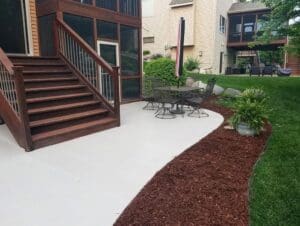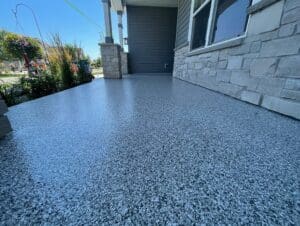When it comes to flooring, epoxy is a popular choice for its durability and aesthetic appeal. Whether you’ve recently installed epoxy floors or you’ve had them for a while, proper maintenance is key to keeping them in prime condition. In this guide, we’ll explore essential tips to ensure your epoxy floors stand the test of time.
Understanding Epoxy Flooring
Before delving into maintenance tips, let’s quickly revisit why epoxy flooring is a top choice for many homeowners and businesses alike.
The Power of Epoxy
Epoxy floors are renowned for their resilience, resistance to stains, and seamless finish. Typically composed of resin and hardeners, epoxy creates a tough surface that can withstand heavy traffic, making it an ideal solution for garages, warehouses, and even residential spaces.
Maintenance Essentials
Now that we appreciate the robust nature of epoxy, let’s explore how to maintain its pristine condition.
1. Regular Cleaning Routine
Daily Sweeping and Dusting
A simple yet effective practice is to sweep or dust your epoxy floors daily. This prevents dirt and debris from accumulating, maintaining the floor’s smooth appearance.
Weekly Mopping
For a deeper clean, mop your epoxy floors weekly using a mild detergent. Avoid abrasive cleaners, as they can damage the epoxy surface.
2. Prompt Spill Cleanup
The Importance of Quick Action
Epoxy is resistant to stains, but it’s crucial to address spills promptly. Whether it’s oil, chemicals, or other substances, wipe them up immediately to prevent potential damage.
3. Protect Against Scratches
Use Furniture Pads
When moving furniture or heavy objects, place protective pads underneath to prevent scratches. While epoxy is resilient, scratches can diminish its glossy finish over time.
Avoid Sharp Objects
Be mindful of sharp objects on the floor, as they can cause scratches or dents. If you need to work with tools, consider using a padded surface or a work mat.
4. Periodic Maintenance Checks
Inspect for Wear and Tear
Regularly inspect your epoxy floors for signs of wear and tear. Address any issues promptly, such as cracks or chips, to prevent them from worsening.
Reapply Topcoat as Needed
Depending on foot traffic and usage, your epoxy floors may benefit from a new topcoat. This can rejuvenate the surface and enhance its protective qualities.
Conclusion
By incorporating these epoxy maintenance tips into your routine, you’ll ensure that your floors remain in prime condition for years to come. From daily cleaning habits to periodic inspections, proactive care is the key to preserving the beauty and functionality of your epoxy flooring. Invest the time now, and you’ll reap the benefits of a stunning and long-lasting floor in the future.



